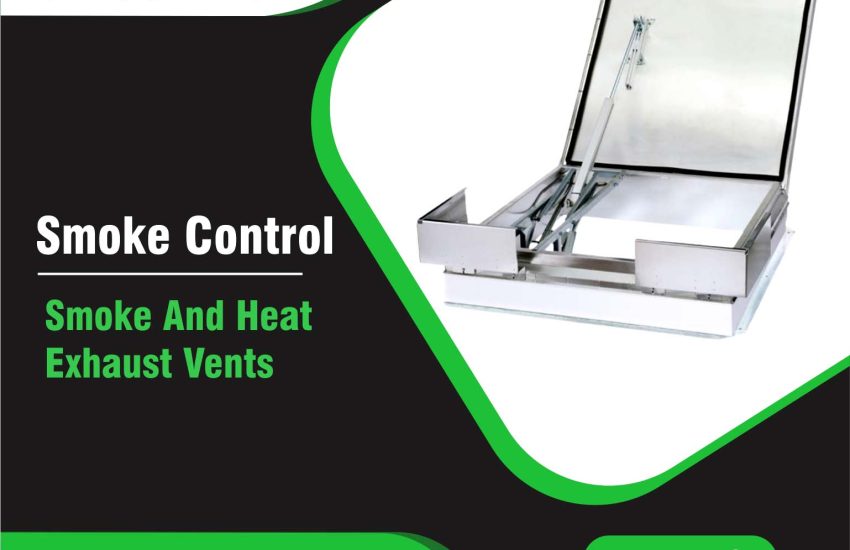Smoke And Heat Exhaust Vents are crucial for ensuring the safety of buildings in case of fire. These vents remove smoke, heat, and toxic gases, reducing fire hazards. This article explores the specifications, benefits, and importance of smoke and heat exhaust vent, using detailed keywords that align with SEO best practices.
What Are Smoke and Heat Exhaust Vents?
Smoke and heat exhaust vent (SHEVs) are specialized systems designed to expel smoke, heat, and harmful gases during a fire. They help keep buildings safe by providing breathable air and preventing heat and smoke buildup. SHEVs are essential in both residential and commercial buildings, such as high-rise buildings, shopping malls, and industrial facilities.
Importance of Smoke and Heat Exhaust Vents
- Safety: Smoke and heat exhaust vent improve safety by removing smoke and hot gases. This helps ensure clear escape routes and reduces the risk of injury or death during a fire.
- Compliance: Regulations often require smoke and heat exhaust systems, especially in large or multi-story buildings. These vents help meet fire safety codes and standards.
- Property Protection: By reducing smoke and heat damage, these vents protect the structure and valuable assets within the building.
Specifications of Smoke and Heat Exhaust Vents
Key specifications determine the efficiency and performance of smoke and heat exhaust vents. Here are the most important factors:
- Airflow Capacity: Airflow capacity is measured in cubic meters per hour (m³/h). Higher airflow is needed for larger buildings or high-rise structures to effectively remove smoke and heat.
- Heat Resistance: Smoke and heat exhaust vent can withstand temperatures ranging from 200°C to 1000°C. The materials used must be able to handle these extremes.
- Size and Dimensions: The vent size depends on the building’s requirements and the expected heat load. Proper sizing ensures the system clears smoke and heat efficiently.
- Activation Mechanism: Smoke and heat exhaust vent activate automatically when smoke or heat is detected, or they can be opened manually. Automatic activation is critical for fast response during a fire.
- Durability and Maintenance: Vents should be made from corrosion-resistant materials to ensure reliability and ease of maintenance. Common materials include stainless steel, aluminum, and galvanized steel.
- Control Systems: Modern systems include advanced control panels with remote monitoring features. These help building managers ensure the system is functioning properly.
- Compliance with Standards: Smoke and heat exhaust vent must meet local and international fire safety standards, such as NFPA 92 (National Fire Protection Association) and EN 12101 (European Standard for Smoke and Heat Control Systems).
Types of Smoke and Heat Exhaust Vents
- Automatic Smoke and Heat Exhaust Vents (ASHEVs): These vents automatically open when smoke or heat is detected. They are ideal for large buildings or areas with heavy foot traffic.
- Manual Smoke and Heat Exhaust Vents (MSHEVs): These vents require manual operation, making them suitable for smaller buildings.
- Smoke Shaft Vents: These vents direct smoke and heat to the top of high-rise buildings, where it is expelled through roof vents.
- Natural Ventilation Vents: These rely on natural airflow to remove smoke and heat, offering an energy-efficient solution for smoke control.
- Mechanical Ventilation Systems: These systems use fans or blowers to expel smoke and heat and often work in combination with other smoke control systems.
Benefits of Smoke and Heat Exhaust Vents
- Improved Fire Safety: These systems remove smoke and heat, keeping escape routes clear and reducing fire risks.
- Increased Visibility: Removing smoke from hallways, stairwells, and elevators makes evacuation routes visible and safer.
- Enhanced Air Quality: Removing harmful gases improves air quality, preventing respiratory issues during a fire.
- Protection of Building Structure: By lowering temperatures, smoke and heat exhaust vent protect the building’s structural integrity and reduce fire damage.
Why Choose the Right Smoke and Heat Exhaust Vents?
Choosing the right system is crucial for safety, compliance, and performance. Factors such as building size, fire load, and available installation space affect the best choice for each building. Consulting with fire protection experts can help you select the most efficient and cost-effective solution.
Conclusion
Smoke and heat exhaust vent are a vital part of any fire safety system. They help protect lives, prevent damage to property, and ensure compliance with fire safety regulations. Whether installing a new system or upgrading an existing one, choosing the right smoke and heat exhaust vent is key to achieving maximum safety and efficiency.


